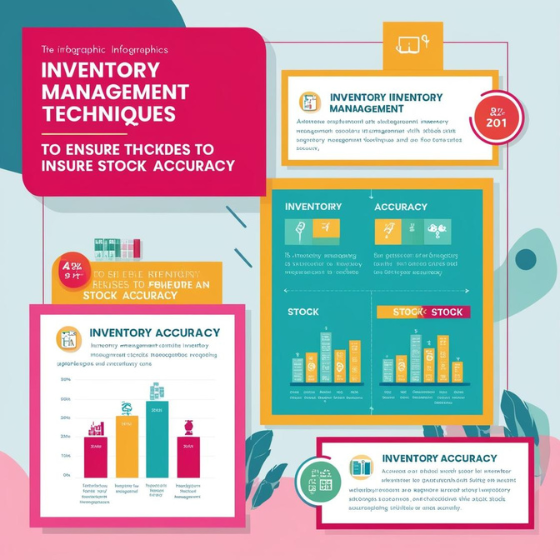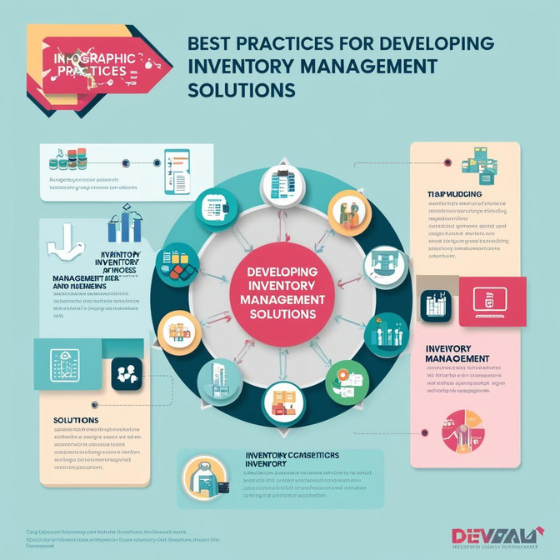Introduction
Did you know that businesses lose up to 5% of their revenue annually due to poor inventory management? Whether you’re managing a retail store, an e-commerce platform, or a manufacturing operation, stock accuracy is critical to ensuring smooth operations. Without accurate inventory records, businesses face stockouts, overstocking, wasted resources, and unsatisfied customers.
In this blog, we’ll explore the importance of inventory management and how businesses can ensure stock accuracy to improve operational efficiency, reduce costs, and maintain customer satisfaction. Whether you’re a small business or an enterprise, ensuring accurate stock levels can significantly contribute to your success.
What is Inventory Management?
Inventory management is the process of overseeing and controlling the flow of goods within a business. It involves tracking products and materials from the moment they are acquired to when they are sold, used in production, or discarded. Effective inventory management ensures that the right amount of stock is available at the right time.
Stock accuracy is a vital aspect of inventory management. It refers to the precision with which inventory is tracked, recorded, and updated. A high level of stock accuracy ensures that businesses can fulfill orders on time, minimize waste, and optimize supply chain operations.
Why is Stock Accuracy Important in Inventory Management?
Stock accuracy plays a key role in preventing a range of issues that can negatively impact your business. Let’s explore the primary reasons why it’s essential:
1. Prevents Stockouts and Overstocking
Having accurate stock levels helps businesses maintain the ideal inventory balance. Stockouts (when an item runs out of stock) can lead to missed sales opportunities and dissatisfied customers. On the other hand, overstocking ties up capital and storage space, potentially leading to waste, especially for perishable goods.
- Stockout Prevention: Accurate stock counts allow businesses to restock in time, preventing missed sales and lost revenue.
- Overstocking Prevention: Regular stock monitoring ensures that excess inventory is avoided, reducing storage costs and the risk of obsolescence.
2. Enhances Customer Satisfaction
Accurate inventory records directly impact customer experience. If a customer places an order for an item that is out of stock, it leads to frustration and potentially lost trust in the brand. By ensuring stock accuracy, businesses can fulfill customer orders promptly and accurately.
- Quick Fulfillment: Accurate stock levels enable timely order processing and shipping.
- Trust and Reliability: Maintaining stock accuracy improves brand reputation and encourages repeat business.
3. Optimizes Cash Flow
Maintaining accurate stock helps businesses avoid tying up cash in excess inventory. When stock levels are precise, companies can more effectively forecast demand, minimize over-ordering, and reduce the need for deep discounting to clear excess inventory.
- Reduced Holding Costs: Accurate stock counts lead to fewer products sitting unsold, lowering warehousing and storage expenses.
- Better Forecasting: Accurate data allows businesses to predict demand and order stock accordingly, optimizing purchasing decisions.
4. Supports Efficient Supply Chain Management
For businesses that rely on multiple suppliers or have complex supply chains, inventory management is essential. Stock accuracy helps track orders, monitor supplier performance, and ensure that the right materials are available at the right time.
- Reduced Lead Time: Accurate stock counts help businesses place orders at the optimal time, reducing lead time.
- Supplier Coordination: Accurate records provide valuable insights to communicate better with suppliers and ensure timely deliveries.
Best Practices for Ensuring Stock Accuracy
Ensuring stock accuracy requires implementing effective practices and processes. Here are several best practices that businesses can adopt:
1. Implement Real-Time Inventory Tracking
Modern technology allows businesses to track inventory in real-time, significantly improving stock accuracy. By using an integrated inventory management system, businesses can instantly update stock levels as products are sold, returned, or restocked.
- Barcode Scanning: Using barcode scanning for product entry and exit ensures accurate tracking with minimal human error.
- RFID Technology: RFID (Radio Frequency Identification) can automatically update stock information, reducing manual effort and ensuring greater accuracy.
2. Conduct Regular Stock Audits
Regular stock audits are essential to maintain accurate inventory levels. These audits can be performed in several ways:
- Cycle Counting: Instead of conducting a full inventory count, cycle counting involves counting a small subset of inventory regularly throughout the year.
- Physical Count: A complete physical count of all items in inventory should be done periodically, often at the end of the financial year or when inventory discrepancies are suspected.
Regular audits help identify discrepancies between recorded and actual stock levels and allow businesses to make necessary adjustments.
3. Use Inventory Management Software
Inventory management software (IMS) is designed to help businesses track stock levels, orders, sales, and deliveries. These systems automate inventory tracking, making it easier to monitor stock in real time and avoid errors.
- Automated Updates: As sales are made or stock is received, the system automatically updates inventory levels, reducing the risk of human error.
- Advanced Reporting: IMS provides businesses with reports on stock trends, demand forecasts, and stockouts, helping businesses make data-driven decisions.
4. Standardize Inventory Processes
Having clear, standardized procedures for handling inventory ensures that everyone in the organization follows the same protocols, reducing the chances of mistakes. This includes guidelines for receiving stock, stocking shelves, and shipping orders.
- Receiving Process: Establish a checklist for receiving inventory to ensure that all items match the purchase order and are correctly logged into the system.
- Stocking Procedure: Standardizing how items are stocked and organized in the warehouse can prevent misplaced or lost goods.
5. Train Your Staff
Employees who handle inventory should be well-trained in the processes and technology used for stock management. Training ensures that everyone knows how to use the tools and systems properly, reducing errors that can lead to stock inaccuracies.
- Technology Training: Ensure your staff is comfortable with the inventory management software and any hardware used for tracking, such as barcode scanners or RFID systems.
- Process Training: Provide clear instructions on stock handling, receiving, and auditing to ensure smooth operations.
Common Challenges in Inventory Management and How to Overcome Them
Despite the best efforts, businesses often face challenges in maintaining stock accuracy. Here are some common obstacles and strategies to overcome them:
1. Human Error
Manual inventory tracking can be prone to mistakes, such as incorrect data entry or miscounting. To reduce human error:
- Invest in automation tools such as barcode scanning or RFID technology.
- Implement checks and balances by having multiple team members verify stock levels.
2. Inaccurate Forecasting
Incorrect demand forecasting can lead to overstocking or stockouts. To improve forecasting:
- Use historical sales data to predict demand trends.
- Regularly review inventory turnover rates and adjust forecasts accordingly.
3. Stock Movement Issues
Items may get misplaced or lost in a large warehouse, leading to discrepancies. To solve this:
- Organize inventory in a systematic manner (e.g., FIFO or LIFO) to track stock movements easily.
- Implement better tracking methods, such as location-based inventory management.
Conclusion
Ensuring stock accuracy is crucial for the smooth running of any business that manages physical goods. By implementing best practices such as real-time tracking, regular audits, and the use of inventory management software, businesses can reduce errors, improve customer satisfaction, and optimize their operations.
At Sodio, we specialize in developing customized solutions that help businesses improve inventory management and ensure stock accuracy. Whether you need a complete inventory management system or tools to streamline your existing processes, we can help you achieve better control and efficiency.
Ready to optimize your inventory management and ensure accurate stock levels? Contact Sodio today to explore our solutions and learn how we can help you streamline your operations.







